Did your car’s brake lights stop working? Worry not; it’s commonly due to brake light fuse issues. Brake lights are critical for road safety and a communication tool between drivers. The brake light fuse protects the lights in case of an electrical malfunction. Let’s explore common brake light fuse faults and learn how to troubleshoot them.
Understanding Brake Light Issues
Brake lights are a crucial component of vehicles. They act as a communication tool between drivers, signaling cars to slow down, maintain distance, and indicate potential hazards. Your car’s visibility also depends on brake lights. These lights prevent rear-end collisions and ensure road safety, enabling a safer driving experience.
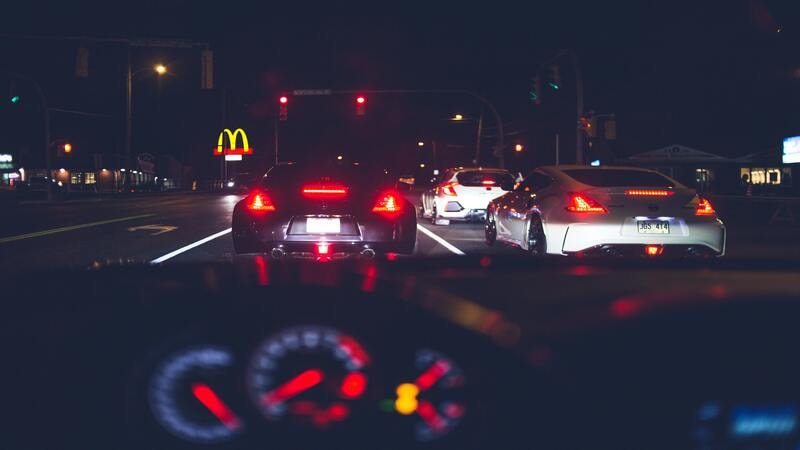
The accident risk increases threefold if brake lights don’t work properly. A report from the National Highway Traffic Safety Administration indicates that 30 out of 100 accidents are rear-end collisions. So, what causes brake lights to fail? Common issues include dead bulbs, a faulty brake light switch, blown fuses, or faulty sockets.
Most of the brake light issues are easy to troubleshoot and fix. The common brake light fault is a blown fuse. The inrush current generated when the car starts often causes the brake light system fuse to blow. Other problems are less common but likely to occur in any vehicle. Let’s explore more!
Why Is the Brake Light Fuse Important?
A fuse is a simple device that protects electrical components like tail lights and headlights from overcurrent. It is connected between the tail lights and the electrical circuitry of the car. Whenever excess current (above-rated current) flows through the fuse, it melts to break the circuit and protect brake lights from malfunctioning due to high currents.

People often disregard the fuse, but it has a crucial role in a vehicle’s safety system. It protects a variety of electrical components in case of electrical faults. For instance, a slight issue in a car generator can damage all the electrical components. Fuse is a cheap but critical safety device that saves your expensive parts like the head unit, tail lights, etc.
Signs of a Blown Brake Light Fuse
Whenever the brake light fuse blows, there will be signs for sure. The main indicator is non-operational brake lights. When you press the brake pedal, the lights don’t glow. The brake lights can go completely off due to a broken fuse.
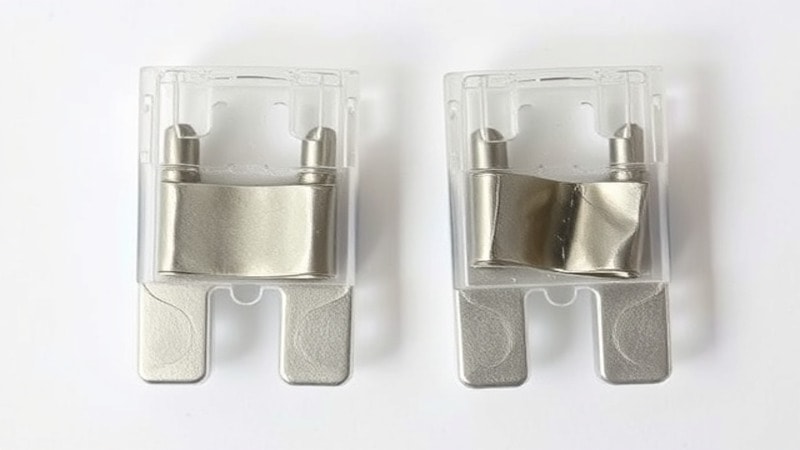
When brake lights are not working, but tail lights are functioning properly, the issue is again most likely in the fuse box. Apart from these obvious signs, the car dashboard also indicates warning lights if your car is equipped with sensors. You may see a Brake Warning Light or an ABS Warning Light.
Frequent Causes of Brake Light Issues
Brake light issues are very troublesome and pose major safety risks. You need to be careful about faults in tail lights. Here are some common causes of brake light faults:
Blown Fuse

Fuses are very sensitive to overcurrents and blow away in no time to protect the brake lights. Any power surge or sudden inrush current in the electrical system can cause the fuse to blow right away. Since a blown fuse disconnects the light from the vehicle’s brake light circuit, it doesn’t operate.
Wiring Issues
Wiring issues can also cause brake lights to malfunction. Sometimes, the ground wire detaches, resulting in inoperative brake lights. Any type of wire damage can also limit the flow of current to brake lights. Wire damage is uncommon, but you never know if a squirrel or mouse has broken into your car.
Damaged Brake Light Switch
The brake pedal is connected to a brake light switch that turns on the brake light bulb when you press the pedal. The switch can get loose and function improperly. It can also degrade over time, leading to a flickering brake light bulb. Most commonly, the brake light switch disconnects due to a sudden shock or blow that hampers the tail lights from working.
| Failure Type | Common Causes |
|---|---|
| Blown Fuse | Overcurrent, inrush current, short circuit, and overload |
| Wiring Issues | Corrosion, degradation, loose connections, and excess heating |
| Brake Switch Malfunction | Misaligned brake paddle, worn-out switch, and contacts |
Expert Guide to Troubleshooting Brake Light Fuse Issues
Are you certain that the brake light issue is most probably due to a blown fuse? If yes, the first and foremost step is to spot the brake light fuse location in your vehicle. It can be under the dashboard or inside the engine compartment, housed in a fuse box.
Once you find the fuse box, you need to identify the brake light fuse. The fuses are usually labeled. Otherwise, you will have to check the car manual and see the fuse diagram or brake light control module to identify the brake light fuse.
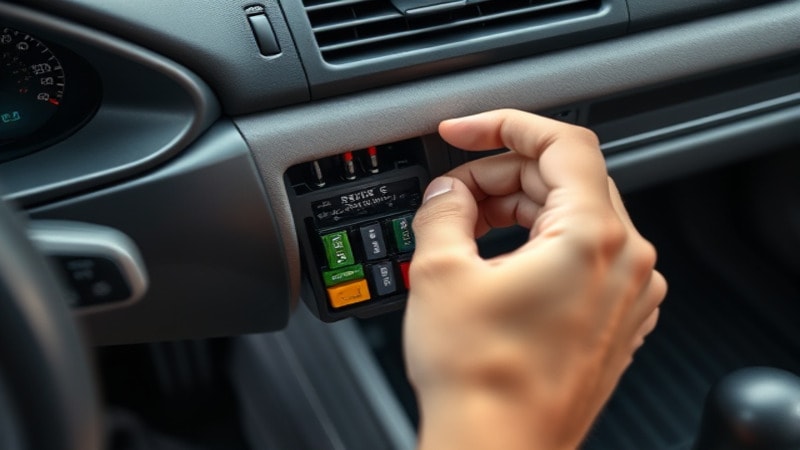
Use a test light to see if the current is passing through the fuse. If not, the fuse is blown and needs to be replaced. Change the fuse immediately and check the tail lights again. If the issue still persists, the problem is not with the fuse.
Sometimes, the fuse box gets shorted out. Take the car to a professional car electrician for repair. You should also be mindful of other brake light issues and not haste. The brake light bulb may have fused, or the brake light switch got disconnected.
Replace the Brake Light Fuse in 5 Steps
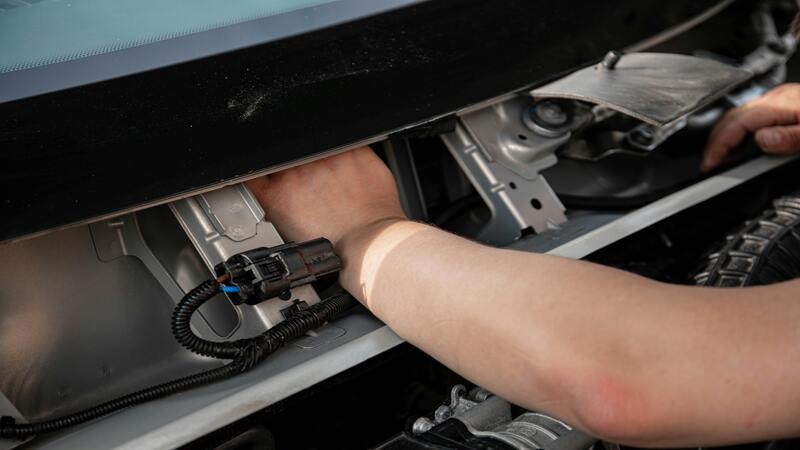
Replacing a fuse is no rocket science. Here are five easy steps that you can follow to replace the brake light fuse:
Turn Off the Car

When interacting with electrical components, you must ensure your safety. Turn off the car engine and disconnect the battery. Be mindful of residual charges, and don’t touch the wires or fuses right away.
Open the Fuse Box
Open the fuse box and find the brake light label, or use the fuse diagram to locate the exact fuse. Make sure not to loosen any other fuses in the box. Eliminating one problem can lead to a new one.
Inspect the Fuse
You can inspect the fuse to see if there are any burnt marks. The physical condition of the fuse will say it all. If the fuse appears fine, you should check the filament against a bright light. A broken filament means the fuse is blown.

Replace the Fuse
Once you’re sure that the fuse is blown, replace it with a new one. Make sure the amperage is the same without any variations. You can check the specifications of the fuse from the car manual. If you’re skeptical, get help from a professional.
Test the Brake Lights

Finally, the test light was illuminated to see its functioning. Secure all fuses and ensure that none are loose. Close the fuse box and connect the battery again. Prepare to start the car for the final check and hit the brakes to turn on the lights. If the test light fails, reach out to an electrician.
Diagnose and Fix Brake Light Switch Problems
Brake light switch problems are recurring and can be a headache. The brake switch acts like a trigger to turn on the brake light when you hit the brake. The brake switch often disconnects from the brake pedal and stops functioning. The switch is also prone to degradation over time.
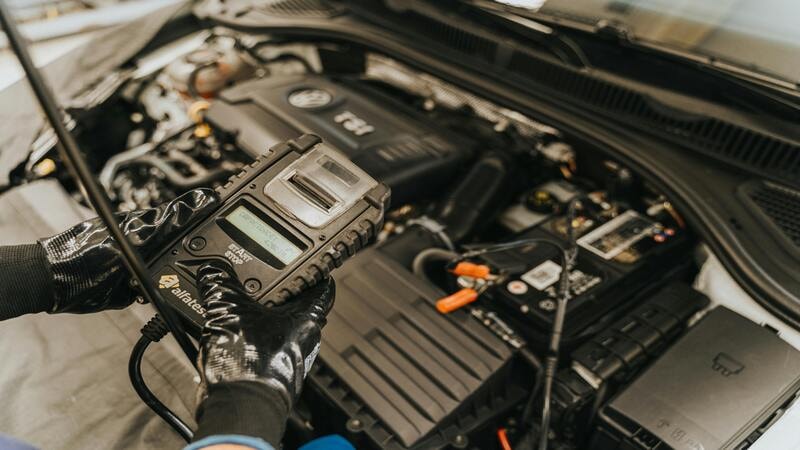
The brake light switch is located near the brake pedal. Try to reach the break switch and press it to test. Most of the time, it is stuck and needs to be pulled out for proper functioning. Otherwise, you need to take your car to a mechanic for repair.
Locate the Brake Light Fuse in Your Car
Locating the fuse box in your car is no less than a treasure hunt if you’re doing it for the first time. Look at the right place, and you’ll find it quickly. The fuse box is usually placed below the dashboard of the car on the driver’s side. Or you may find the fuse box in the engine compartment, called the underhood fuse box.

Still finding it difficult to locate the fuse box? Check the car manual, it must have an illustration to locate the fuse box. You can also search online, ask peers or professionals, and get in touch with the manufacturer. The brake light fuse location is not a mystery!
Pro Tips for Maintenance of Brake Lights
Brake lights are normally maintenance-free and don’t require any specific maintenance schedule apart from regular cleaning. You need to check the brake light bulb for damage or wear and also inspect the wiring. The brake switch is subject to excessive wear due to continuous use. Try to keep it clean, as dust and debris often accumulate around it.
The fuse box sometimes gets corroded due to humidity or water ingress. It causes the fuse to malfunction and burn out. You must ensure that the fuse box is corrosion-free and all fuses are well-secured and in good condition. If you encounter any issues during maintenance, go for replacement or repair immediately.
FAQs
Is there a fuse for the brake light?
Yes, every vehicle has a fuse for the brake lights. It protects the brake light bulb from excess current in case of electrical failure.
How do I know if my brake fuse is blown?
A physical inspection of the fuse can help you determine whether it’s blown or not. Check the filament inside the fuse; if it’s broken, the fuse has blown already.
What is a brake light switch?
A brake light switch is a trigger that is connected to the brake pedal. When you press the brake, the switch turns on the brake light bulb.
Conclusion
Ever experienced faulty brake lights? It can be a safety risk for you. We’ve discussed all the common issues related to faulty brake lights, especially brake light system fuse problems. You can follow our expert guide to understand, diagnose, and troubleshoot the faults. It’s recommended to seek professional help if the issue is beyond comprehension.
Looking to replace your old brake lights? Carlightvision offers durable and long-lasting LED brake lights. Get a pair and forget about fuse issues or diffused bulbs.
Ensure Your Safety: Check Your Brake Light Fuse Today!
Ready to upgrade your vehicle’s lights? Carlightvision is the world’s leading manufacturer of high-quality car lights. With over 15 years of robust R&D and advanced manufacturing technology, it delivers the best product to customers. Explore our exclusive product range and get in touch to experience the best customer service.




